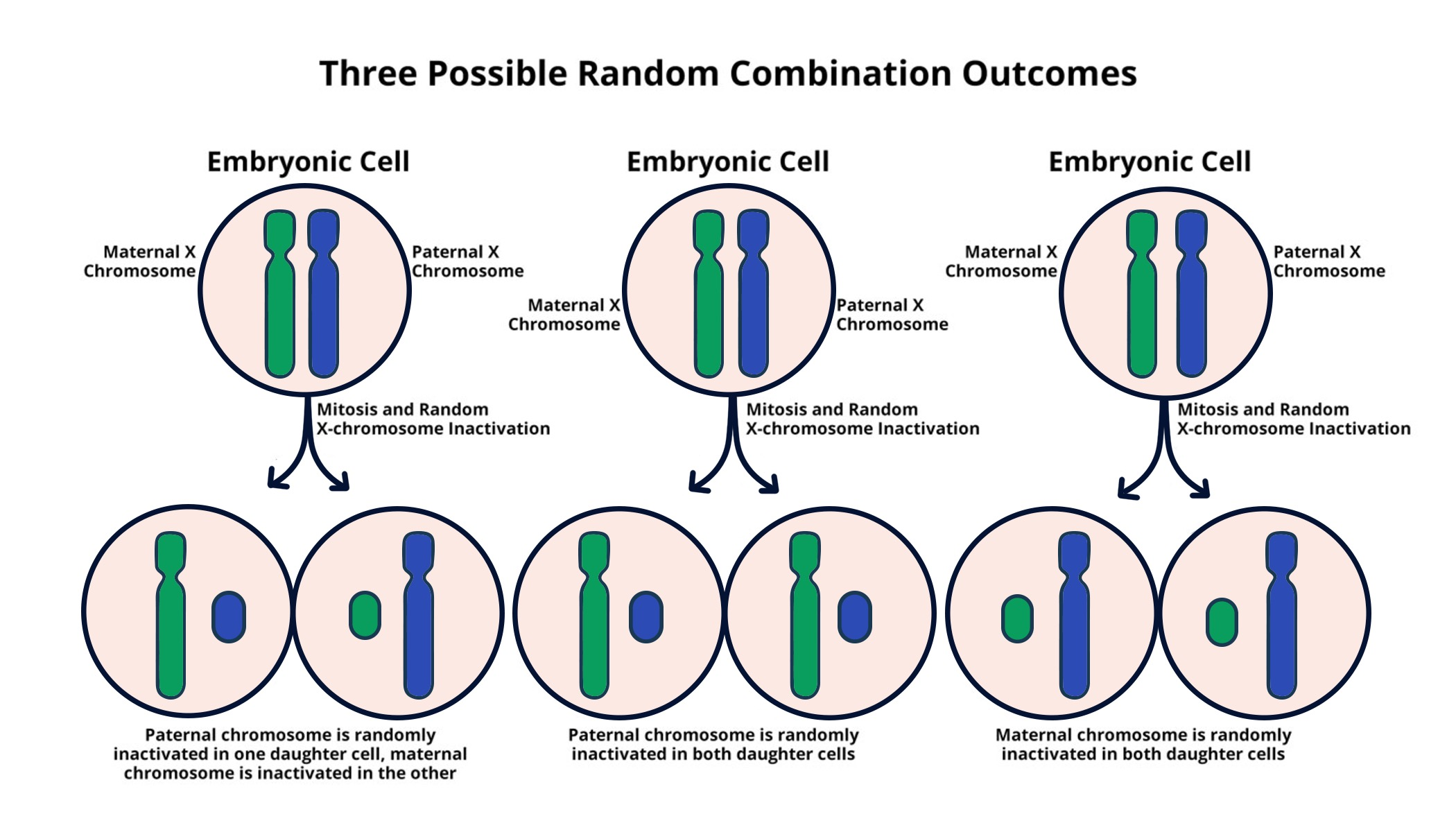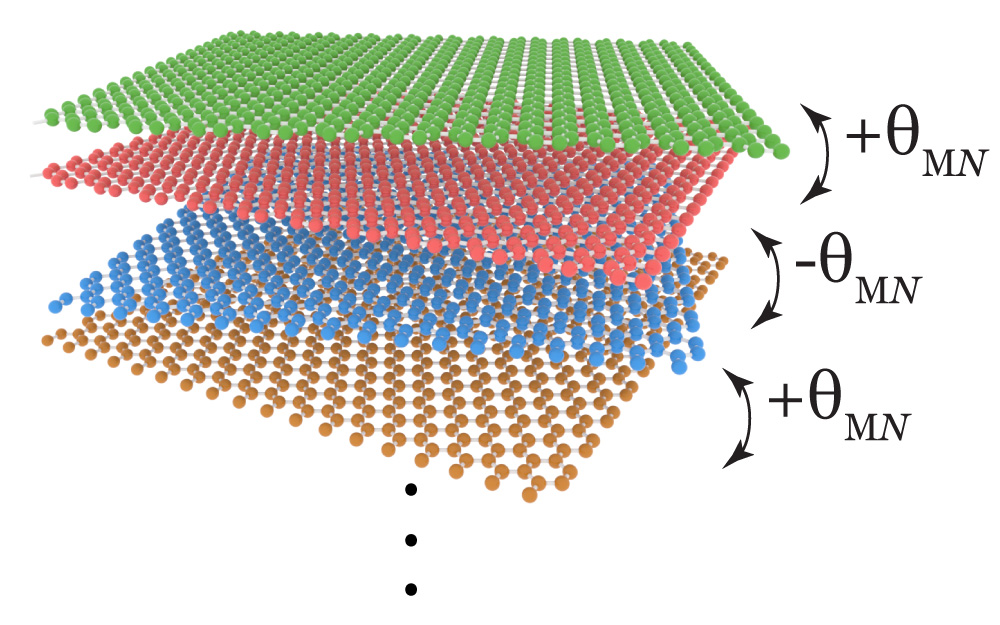X Chromosome Inactivation is a fascinating biological process that elegantly balances the genetic makeup of mammals, particularly in females who possess two copies of the X chromosome. This intricate mechanism ensures that one X chromosome is silenced, allowing females to maintain a gene dosage equal to their male counterparts, who carry only one X chromosome. The discovery of how this inactivation occurs has far-reaching implications, particularly for genetic diseases such as Fragile X Syndrome and Rett Syndrome. Recent studies, including groundbreaking research from Jeannie T. Lee’s lab, have illuminated the role of Xist RNA in this process, suggesting potential new therapies that could revolutionize treatments for these conditions. Thus, exploring X Chromosome Inactivation opens doors to innovative chromosome therapy that could significantly improve the lives of those affected by genetic disorders.
The phenomenon of X Chromosome Inactivation, often referred to as XCI, highlights a critical aspect of genetic regulation in females and its implications for disease treatment. As a natural process that silences one of the two X chromosomes in females, XCI is essential for maintaining genetic balance and preventing overexpression of X-linked genes. This regulatory mechanism intersects with several neurodevelopmental and genetic conditions, drawing researchers’ attention towards conditions like Fragile X and Rett Syndrome. Advances in understanding the role of Xist RNA and its influence on chromosomal structure may pave the way for innovative therapeutic strategies, including chromosome therapy. Overall, the study of X chromosome dynamics serves as a promising frontier in the quest to alleviate genetic diseases affecting millions.
Understanding X Chromosome Inactivation
X chromosome inactivation (XCI) is a vital process in female mammals that ensures the dosage balance of X-linked genes between males and females. In females, with two X chromosomes, XCI randomly silences one of the two chromosomes to prevent an excess of gene products from the X chromosome. This process is crucial as it prevents diseases that could arise from the overexpression of X-linked genes, especially in the case of disorders like Fragile X Syndrome and Rett Syndrome. The complexity of XCI is not just a simple cellular event; it involves intricate molecular interactions that lead to stable gene silencing.
Recent studies, including those led by Jeannie Lee, have uncovered the mechanisms behind XCI, highlighting the role of Xist RNA in modifying chromosomal material properties. This change in the chromatin environment allows for the effective silencing of one X chromosome. Understanding these mechanisms is not only fundamental for grasping basic biological processes but also holds promise for innovative therapies aimed at genetic diseases linked to the X chromosome, offering hope for individuals affected by conditions such as Fragile X Syndrome.
Potential Therapies for Genetic Diseases
The advancements in understanding X chromosome inactivation have opened new avenues for developing therapies targeting genetic diseases like Fragile X Syndrome and Rett Syndrome. These conditions are often caused by mutations on the X chromosome, and the ability to ‘unsilence’ inactivated X chromosomes could restore the function of these genes. Innovative approaches being researched aim to manipulate the biophysical properties of the chromatin environment, potentially allowing for the resurgence of healthy gene expression in affected individuals. This line of research reflects a significant shift towards chromosome therapy as a viable solution for previously untreatable genetic disorders.
Moreover, the implications stretch beyond just finding a cure for individuals with Fragile X and Rett syndromes. The methodologies developed in unlocking the mysteries of the X chromosome can be applied to other genetic conditions as well. For instance, by inducing a similar process of unsilencing in males who carry X-linked mutations, researchers could address gene defects that lead to a variety of genetic diseases. This evolution in genetic therapy signifies a new era in treating disorders linked to chromosome abnormalities, paving the way for clinical trials and potentially transformative treatment options.
Role of Xist RNA in Chromosome Therapy
Xist RNA plays a pivotal role in the regulation of X chromosome inactivation and has emerged as a key player in chromosome therapy for genetic diseases. This non-coding RNA molecule is responsible for initiating the silencing process of one X chromosome in females. Its interaction with the surrounding chromatin, often compared to a gelatinous substance, highlights the sophistication of cellular mechanisms that govern gene expression. By understanding the dynamics of Xist RNA, scientists can leverage its properties to develop targeted therapies that specifically aim to restore the function of mutated X-linked genes.
The therapeutic potential of Xist RNA goes beyond basic research; it could lead to the development of treatments that selectively activate genes on the X chromosome that are silenced due to mutations. This represents a tantalizing possibility for patients enduring the debilitating effects of genetic conditions such as Fragile X Syndrome and Rett Syndrome. As researchers continue to explore the intricacies of X chromosome therapy, Xist RNA remains at the forefront of innovative approaches that aim to combat the effects of genetic diseases while minimizing side effects.
The Science Behind ‘Chromosomal Jell-O’
The term ‘chromosomal Jell-O’ coined by Jeannie Lee aptly describes the unique biophysical characteristics of chromatin that enable effective chromosome organization and gene regulation. This gelatinous substance is essential for providing structure and facilitating interactions between various molecular players involved in chromosomal processes. Particularly during X chromosome inactivation, the properties of this chromatin milieu become crucial as it transforms when Xist RNA engages with it, creating an environment where gene silencing can occur efficiently. This interplay between Xist RNA and chromatin represents a remarkable adaptation that underscores the cellular complexity involved in genomic regulatory mechanisms.
Understanding this chromosomal environment is not just an academic exercise; it’s instrumental in designing therapeutic strategies that can target genetic diseases. By manipulating the state of the chromosomal Jell-O, scientists can potentially influence how genes are expressed and inactivated, leading to novel approaches in genetic therapy. The insights gained from this research could propel us towards innovative treatments, making it possible to reintroduce normal function to genes that have been silenced due to mutations, thus providing hope to those afflicted with conditions related to the X chromosome.
Challenges in Unraveling X Chromosome Mysteries
Despite significant strides in understanding X chromosome inactivation, many challenges remain in fully unraveling its complexities. Not only is the process itself intricate, but the variability in how different genes are affected during inactivation adds another layer of difficulty. For instance, when researchers successfully manage to restore expression to certain mutated genes, they face the conundrum of why other healthy genes on the same X chromosome remain untouched. This phenomenon raises questions about the underlying mechanisms of gene regulation and requires further investigation to ensure that therapeutic strategies do not inadvertently disrupt normal gene function.
Moreover, addressing these challenges involves a multidisciplinary approach that combines genetics, molecular biology, and advanced therapeutic techniques. The journey from basic research to clinical application can be fraught with obstacles, especially in ensuring safety and efficacy in potential treatments. Nonetheless, the ongoing experimentation and inquiry into X chromosome dynamics promise to enhance our understanding of genetic diseases, ultimately leading to more effective strategies for managing conditions caused by mutations on the X chromosome.
Exploring Fragile X Syndrome and Rett Syndrome
Fragile X Syndrome and Rett Syndrome are two conditions that have brought the implications of X chromosome inactivation into sharp focus. Fragile X Syndrome, characterized by developmental delays and intellectual disabilities, is often linked to a mutation in the FMR1 gene located on the X chromosome. This genetic condition can be exacerbated by the effects of X-inactivation; as females possess an additional X chromosome, the interplay between healthy and mutated genes can lead to varied clinical presentations between genders. Thus, comprehensively understanding XCI dynamics provides insight not only into the disorders themselves but also into potential avenues for therapeutic intervention.
Similarly, Rett Syndrome, primarily affecting females, results from mutations in the MECP2 gene and manifests through profound cognitive and physical impairments. The relationship between X chromosome inactivation and these disorders underscores the necessity for targeted therapeutic approaches that can circumvent the silencing of beneficial genes while addressing the deficits caused by mutated ones. This intersection of basic biology and clinical necessity fuels ongoing research aimed at translating discoveries about X chromosome inactivation into impactful treatments for individuals suffering from these challenging genetic conditions.
Innovations in Genetic Research and Treatment
The landscape of genetic research has been dramatically transformed by innovations that align with a deeper understanding of X chromosome biology. The exploration of XIST and its role in chromosome therapy presents a transformative opportunity for addressing diseases linked to X-linked genes. As researchers aim to develop methods for unsilencing genes on the X chromosome, groundbreaking strategies such as gene editing present additional layers of potential for restoring function to mutated genes. These innovations are not only advancing the field but also providing hope for those affected by genetic disorders that were previously deemed irreversible.
Moreover, advancements in genomic technologies allow for more precise manipulation of genetic material, improving our ability to investigate the complexities of gene regulation on the X chromosome. The implications of these innovations reach far beyond a single disease, hinting at a future where targeted genetic therapies can be personalized to fit individual patients based on their unique genetic makeup. Through continued research and exploration in this domain, the field of genetic medicine is poised for significant breakthroughs that may redefine our approach to treating genetic diseases.
Future Directions in X Chromosome Research
Looking ahead, the future of research on X chromosome inactivation is filled with promise. As we refine our understanding of the mechanisms involved, the potential for new therapeutic approaches targeting genetic diseases linked to the X chromosome expands. The goal of restoring gene function in individuals affected by disorders like Fragile X Syndrome or Rett Syndrome may soon transition from theoretical research to tangible clinical applications. The commitment to understanding not only the basic biology but also the potential therapeutic implications underscores the urgency of this work.
Additionally, the exploration of X chromosome dynamics will likely yield insights that could revolutionize how we approach genetic therapy. By unlocking the secrets behind XCI, researchers may discover new genetic pathways and targets that inform treatment for a broader range of genetic diseases, establishing a foundation for improved health outcomes across populations. The convergence of technology, biology, and therapeutic innovation lays the groundwork for a new era in genetics that holds tremendous potential for future generations.
Frequently Asked Questions
What is X Chromosome Inactivation and why is it important for genetic diseases?
X Chromosome Inactivation (XCI) is a cellular process that occurs in females to randomly silence one of the two X chromosomes, allowing normal gene dosage despite having two copies. This mechanism is crucial for genetic diseases linked to the X chromosome, such as Fragile X Syndrome and Rett Syndrome, as it helps balance gene expression and can impact therapeutic strategies in treating these conditions.
How does Xist RNA contribute to X Chromosome Inactivation?
Xist RNA plays a pivotal role in X Chromosome Inactivation by coating the X chromosome and altering its surrounding chromatin, which leads to the chromosome’s silencing. This process is vital for maintaining proper cellular function and ensuring that mutations associated with genetic diseases like Fragile X Syndrome are effectively managed.
Can X Chromosome Inactivation impact therapies for Fragile X Syndrome and Rett Syndrome?
Yes, understanding X Chromosome Inactivation is critical for developing therapies for Fragile X Syndrome and Rett Syndrome. By exploring methods to reactivate silenced genes on the inactive X chromosome, researchers aim to restore normal gene function, potentially offering cures for these genetic disorders.
What advancements in chromosome therapy are linked to X Chromosome Inactivation?
Recent advancements in chromosome therapy are closely tied to the mechanisms of X Chromosome Inactivation. Researchers are investigating ways to ‘unsilence’ the inactive X chromosome to enable expression of healthy genes, providing hope for innovative treatments for genetic diseases such as Fragile X Syndrome and Rett Syndrome.
How could X Chromosome Inactivation research lead to new treatments for genetic diseases?
Research into X Chromosome Inactivation has the potential to unlock new treatments for genetic diseases by identifying ways to reverse the silencing of mutant genes on the X chromosome. This could lead to therapies that restore gene function in conditions like Fragile X Syndrome and Rett Syndrome, offering a path toward effective interventions.
What role does the gelatinous substance around chromosomes play in X Chromosome Inactivation?
The gelatinous substance surrounding chromosomes is essential for X Chromosome Inactivation as it creates a flexible environment that allows Xist RNA and other molecules to access and modify the X chromosome. This flexibility is crucial for the successful silencing of genes that could otherwise lead to genetic diseases.
| Key Concept | Details |
|---|---|
| X Chromosome Inactivation | Females have two X chromosomes, but one is inactivated to maintain gene dosage balance. |
| Role of Xist RNA | Xist RNA interacts with chromosomal ‘Jell-O,’ changing its properties to facilitate inactivation. |
| Chromosomal Jell-O | A gelatinous substance helps prevent chromosomes from tangling and aids in the inactivation process. |
| Therapeutic Potential | Reviving inactivated X chromosomes could lead to treatments for diseases like Fragile X and Rett syndromes. |
| Research Funding | The research was funded by the National Institutes of Health over a 25-year period. |
Summary
X Chromosome Inactivation is a crucial biological process that allows females to balance gene expression from two X chromosomes. This evolved mechanism is key to potential therapies aimed at genetic disorders linked to mutations on the X chromosome, such as Fragile X Syndrome and Rett Syndrome. Research led by Jeannie T. Lee has uncovered the intricacies of this inactivation process, illuminating paths toward innovative treatments that may help alleviate the burden of these diseases. As studies continue, the promise of unsilencing inactivated X chromosomes offers hope not just for those with X-linked disorders, but also for a deeper understanding of genetic disease mechanisms.




